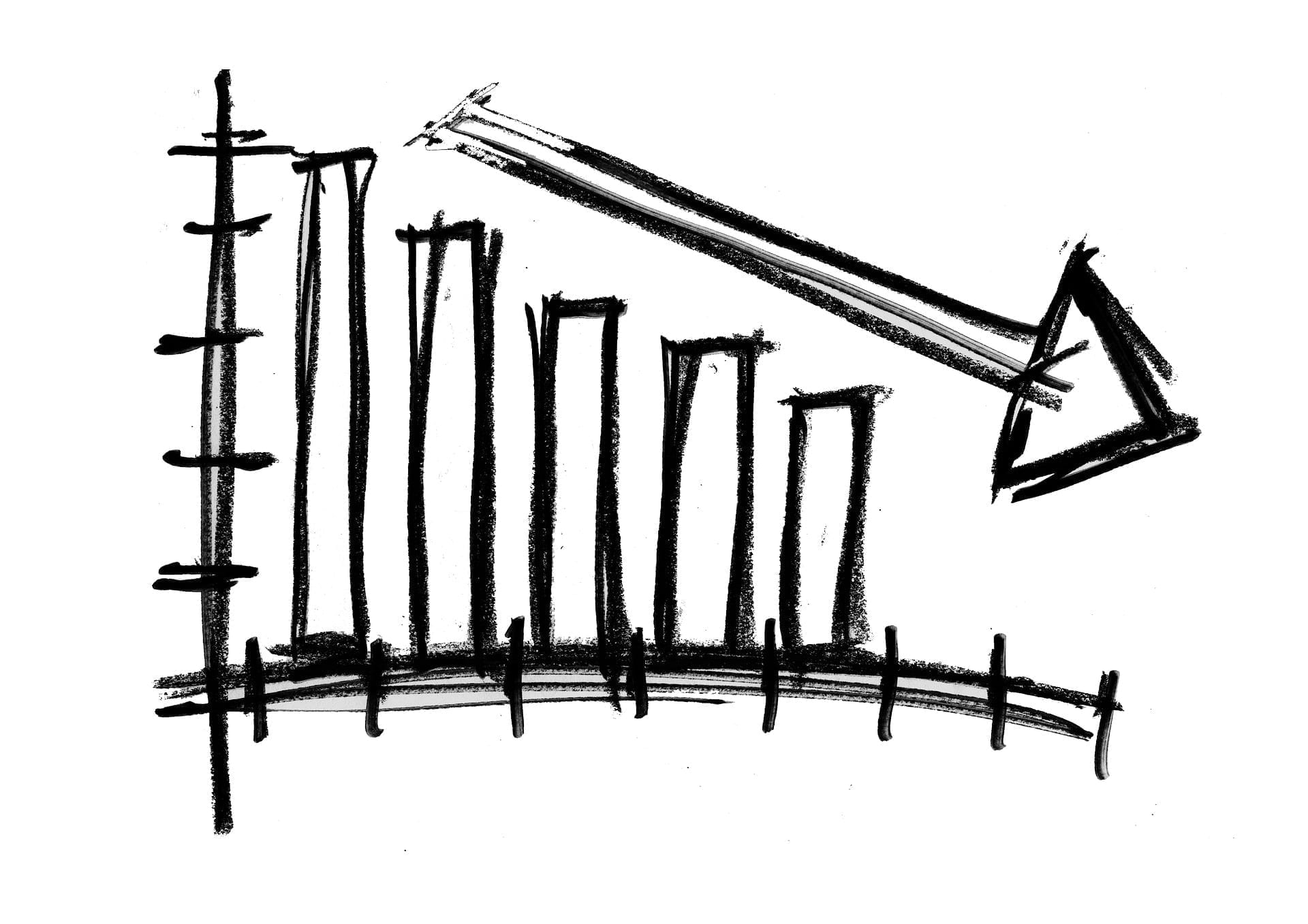Why Shareholders Love CFO’s During a Downturn: Innovation, Cost Cutting, and Financial Flexibility

I’m sure you’ve heard the saying “innovate or die.” The phrase was originally coined by Peter Drucker in one of his many writings on management. But what is innovation? Peter Drucker says that innovation is purposeful and results from systematic analysis and hard work. I love this definition because it includes hard work. Companies that work the hardest, analyze what they are doing wrong, and review all their available data not only stave off a slow death, but thrive in a compounding way.
“Systematic innovation therefore consists in the purposeful and organized search for changes, and in the systematic analysis of the opportunities such changes might offer for economic or social innovation.“
Peter Drucker – Innovation and entrepreneurship – Pg. 35
Compounding Interest…I mean Innovation
Would you be surprised to know that only 4.5% of the Fortune 1000 and S&P Euro 350 companies have grown faster and more consistently than the other 95.5% over the past 20 years? These companies are clearly doing something right. Whether it’s hard work, analysis, or a systemic review, these companies are clearly innovators. With an average annual return that’s 7% higher than their peers, these few companies prove that there is a compound effect to consistent and constant innovation.
Death By Innovation

From high school to college, Sears has been the example of choice to show what a lack of innovation does to a company. At one time, Sears was the go-to retail giant for most of your daily needs. Sears paved the way for small-time credit lending with there version of a credit card before banks took up the idea. It wasn’t until the early 2000s and the emergence of internet retailers that Sears stopped being relevant and started regressing. Sears even doubled down on the instore shopping approach by discontinuing their successful catalog program. Ever since then Sears has struggled to keep afloat. Innovation propelled Sears to the top of the food chain (metaphorically, K-Mart was never a serious competitor) and the lack of innovation sunk Sears market share like a rock.
CFOs Drive Innovation
The other lead cause of a stagnant company, besides lack of innovation previously mentioned, is the inability to flex with the markets. According to Gartner, “the CFO’s no. 1 mandate is to drive efficient growth despite economic and business hurdles.” It’s so easy to get caught up in a booming economy that some companies forget to keep an eye on their bottom line. When do you think CFO’s can drive the most value to their company? During times of uncertainty and volatility or during times of stability and growth? Turns out that CFO’s who enact strategic changes during times of uncertainty which focus on the top and bottom line can deliver 11% more shareholder value, according to Gartner.
As a side note, Gartner created a list of questions CFO’s should be asking when trying to grow efficiently which you can find here: https://www.gartner.com/en/insights/efficient-growth/cost-efficient-growth
Market downturn
As stated before, a CFO’s ability to drive top and bottom-line efficiency during times of uncertainty can mean the difference between growing and being left behind. Put yourself in the seat of the shareholder, would you rather invest in a company that just tries to maintain during a downturn or company that pushes the envelope, drives efficiency, cut costs, and innovates during a downturn? Some may choose the former, but shareholders love the latter (if you can pull it off). Think back to that 11% higher return from the last paragraph.

“Slow revenue growth, increasing cost pressure, heightened global uncertainty are challenging CFOs to advance their cost, capital, and business unit performance management practices. Now is a critical period for organization’s to drive shareholder value. Leading companies that consistently drive top- and bottom-line improvement generate the greatest total shareholder return premium over their industry peers during periods of slow revenue growth that often come before an economic downturn.”
– Gartner White Paper
If you want to learn more about navigating a downturn, check out Gartner’s white paper on the subject: https://www.gartner.com/en/finance/insights/prepare-for-an-upswing-or-downturn/preparing-the-organization-for-an-economic-downturn
Pressing the advantage
While innovation is necessary to grow, cost efficiency makes you sustainable in the longer run. CFO’s are on the front lines of pressing this innovation advantage. Now that you know that only 4.5% of Fortune 1000 and S&P Euro 350 companies have grown faster and more consistently than their peers over the past 20 years, and top and bottom-line efficiency improvements during time of uncertainty render the highest return to shareholders, you can now effectively navigate, survive, and possibly even thrive during the next inevitable economic downturn.
Let us know your concerns when it comes to and economic downturn: LinkedIn
Check out the research for yourself here: https://www.gartner.com/en/insights/efficient-growth








